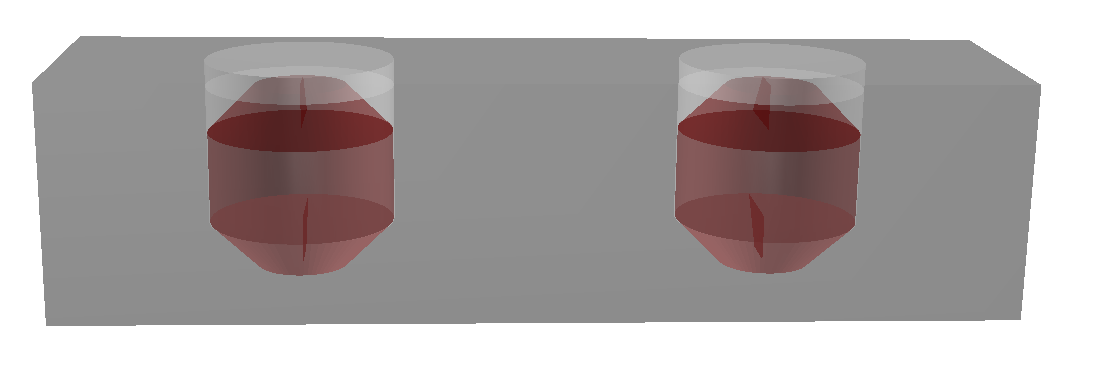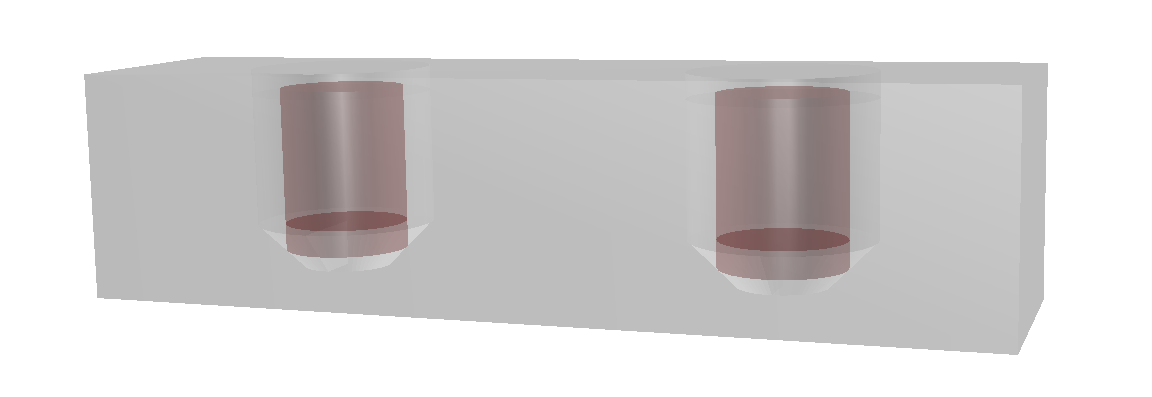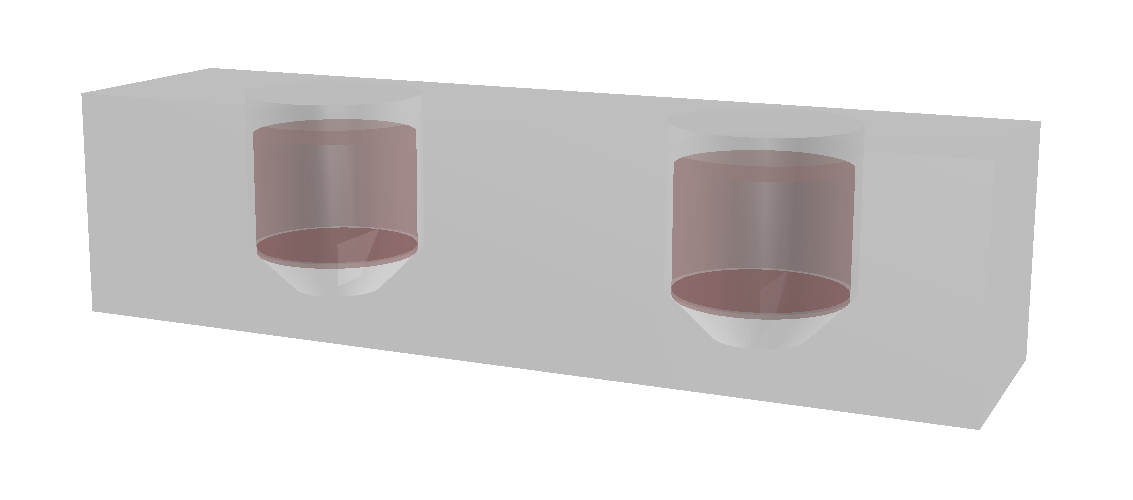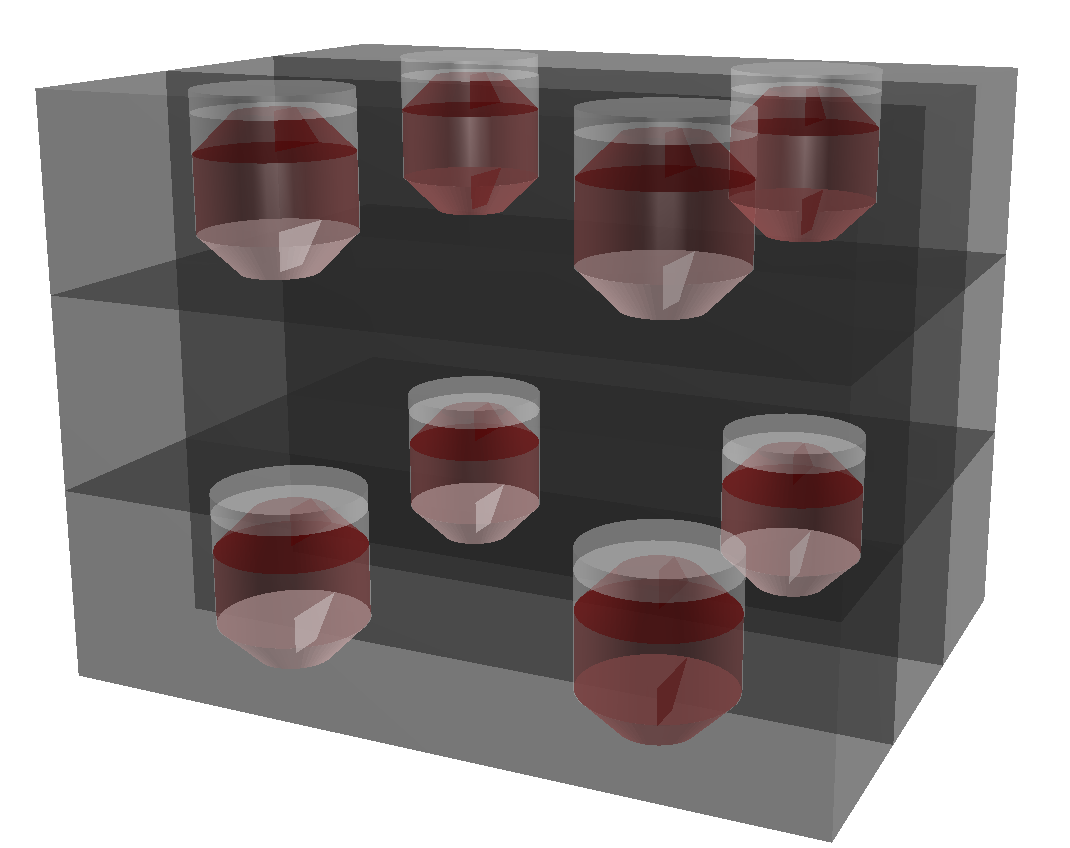Modeling the fuel cells
The uranium/graphite lattice of CP-1 consisted for the most part of alternating layers of uranium-bearing graphite and dead graphite, respecting a cubical lattice with cell side of 8.25 inches. In total, about 44000 bricks were cut, and about 22000 holes were drilled in order to accommodate the fuel lumps. As a stepping stone towards the full three-dimensional model of CP-1, we have first addressed the geometry and material composition of the fuel cells. As reported in CP-413, several combinations of fuel lumps and graphite were chosen for the pile, mainly due to lack of very pure materials: black and brown UO2 and U3O8 cylinders, black and brown UO2 and U3O8 "pseudo-spheres" especially designed to obtain an ideal (almost spherical) fuel lump shape, and finally metal uranium cylinders. The graphite itself came with different qualities, each corresponding to different densities and impurities contents (mainly boron).

Table listing the various combinations of fuel lumps used in CP-1, from reference E. Fermi, Report CP-413 (1943).

Table listing the various brands of graphite used in CP-1, from reference E. Fermi, Report CP-413 (1943).
For each combination of fuel and moderator, we have created a database of fuel cells and tested the corresponding nuclear parameters for an infinite lattice: infinite reproduction factor, kinetics parameters and Fermi's four factors.

The TRIPOLI-4 model of a graphite brick containing two brown oxide pseudospheres.

The TRIPOLI-4 model of a graphite brick containing two metal uranium cylinders.

The TRIPOLI-4 model of a graphite brick containing two black oxide cylinders.

The TRIPOLI-4 model of a lattice portion with four graphite bricks, each containing two pseudospheres.